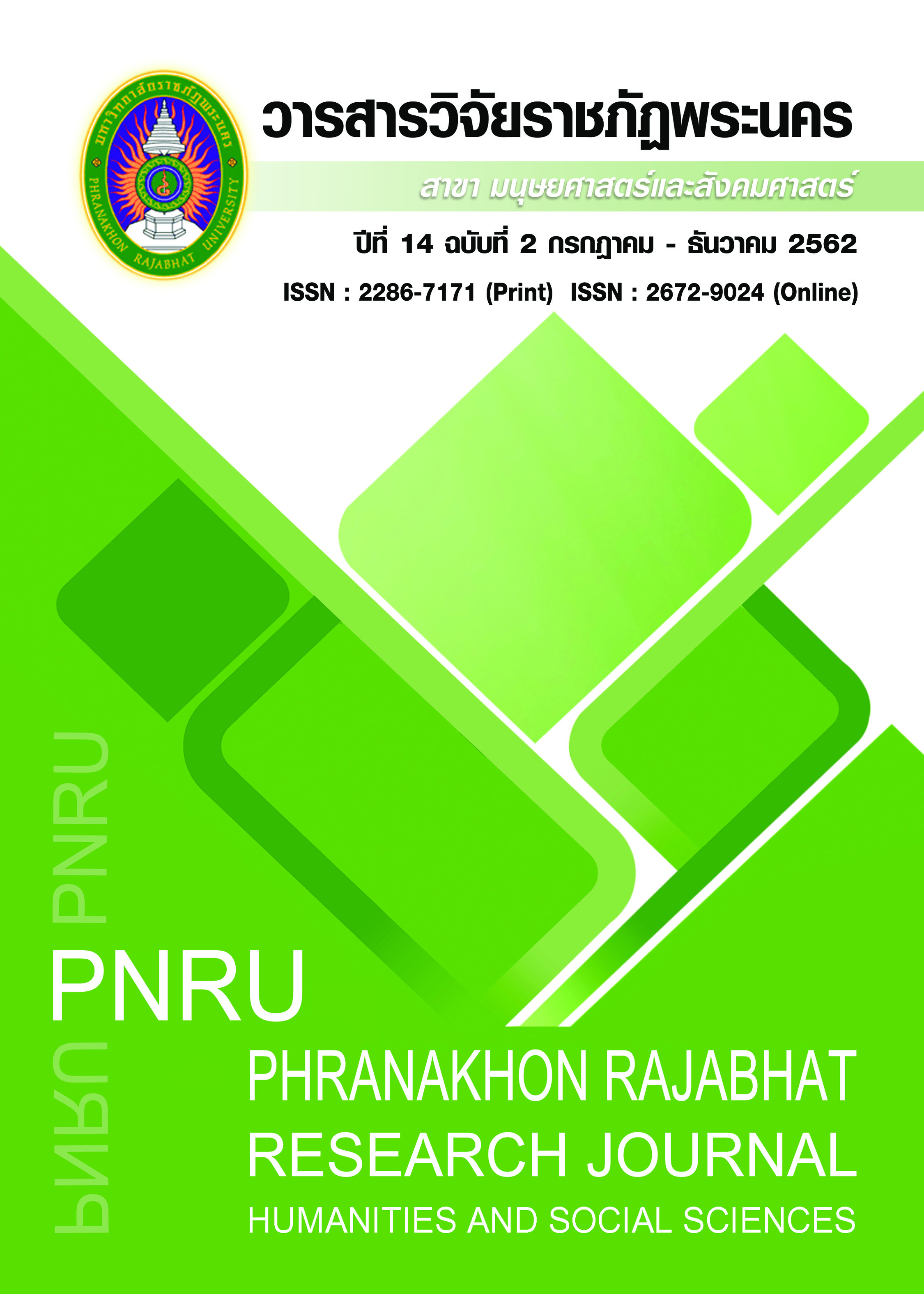FOSTERING TEACHERS’ CREATIVITY TO DRIVE EDUCATIONAL INSTITUTION TO INNOVATIVE ORGANIZATION
Main Article Content
Abstract
The current metamorphism impels an educational institution to adjust itself rapidly to be an innovative organization with adjustment and change in the thinking process in order to bring about a novel valuable invention, leading to an organization of stability and development. Such adjustment is for the institution to be prepared for the metamorphism and producing students to meet the society’s need. The heart of the innovative organization is the teacher as the organization’s member who needs to work creatively. Fostering teachers’ creativity to drive the education institution to become an innovative organization can be conducted
through the following four procedures: (1) encouraging teachers to study, research, and apply knowledge by setting challenging work problems and goals; (2) building an effective teamwork with minimum authoritarianism for teachers’ enthusiasm for and confidence in creating a novel invention; (3) planning, creating accountability, and minimizing working procedures to primarily motivate teachers’ innovative approaches; and (4) providing optional channels of communication for listening and searching teachers’ achievements for their pride and leading to setting the educational institution’s novel working procedures.
Article Details
Each publish articles were copyright by Phranakorn Rajabhat University
Any contents which appeared in each articles in the journal were authors personal opinion. It did not relate to Phranakorn Rajabhat University and other instructors in the university. Each authors would take responsibility on their articles. If there are any mistake, the authors will take responsibility themselves
References
Boanoi, D. (2016). Innovation and creativity. Journal of Management and Marketing. 3(1), 1-12 (in Thai)
Crespell, P., & Hanson, E. (2008). Managing for innovation: insights into a successful company. Forest Products Journal. 58(9), 6-17.
Lam, A. (2011). Innovative organizations: structure, learning and adaptation. innovation perspectives for the 21st Century (pp. 163-175). Madrid, Span: BBVE.
Leekpai, P. (2013). Antecedents to innovativeness and impact on firm performance. Executive Journal. 33(4), 55-63. (in Thai)
Limsuwanrot, N., Kritjaroen,T. & Homsombat, W. (2015). Pathway towards sustainable innovative organization: a case of King Mongkut’s University of Technology Thonburi. MBA KKU Journal. 8(1), 1-18, (in Thai)
Mihic, A.O., Umihanic, B. & Fazlovic, S. (2015). The role of organizational innovation in achieving and maintaining company’s business excellence. Journal of Contemporary Management Issues. 20(1), 79-100.
Pangthai, S. (2017). Roles of administrators implementing educational innovation to practice: Kukampitayasan school case. Research and Development Journal Suan Sunandha Rajabhat University. 9(1), 124-134. (in Thai)
Plachaipiromsil, S. (2011). Usages trend of mobile application. Executive Journal. 31(4), 1110-115. (in Thai)
Prajankett, O. (2014). An educational innovative organization: a new choice of educational administration. Journal of the Royal Thai Army Nurses. 15(1), 45-51. (in Thai)
Razavi, S.H. & Attarnezhad, O. (2013). Management of organizational innovation. International Journal of Business and Social Science. 4(1) January 2013, 226-232.
Rungruangsri, P., Jirachaichaovanon, C., & Sopoonpongpat, P. (2015). Management strategies to enhance employee performance of Phetchabun Rajabhat University. National and International Conference Interdisciplinary Research for Local Development Sustainability. 103-112. (in Thai)
Songmuang, J. (2015). Islamic Studies Instruction of 21st Century. The 2nd National Conference 2015 on “Knowledge integration for Peaceful Society and The ASEAN Community Development” (pp. 183-190). Patani, Thailand: Fatoni University.
Sousa, F.C., Pellissier, R. & Monteiro, I.P. (2012). Creativity, innovation and collaborative organizations. The International Journal of Organizational Innovation. 5(1). Summer 2012, 1-39.
Sririn, W., Kunnurat, P. & Chaiphar, W. (2015). Administrative factors affecting the achievement of becoming and innovative organization Khon Kaen University. KKU Res J HS (GS). 3(3), 54-64. (in Thai)
Thongsai, S. (2015). Nurse and the development of creative thinking. Journal of Phrapokklao Nursing College. 27(1), 112-119. (in Thai)
World Economic Forum. (2015). The Global Competitiveness Report 2015-2016. Retrieved June 15, 2018, from World Economic Forum.: http://www3.weforum.org/docs/ gcr/2015-2016/Global_Competitiveness_Report_2015-2016.pdf


